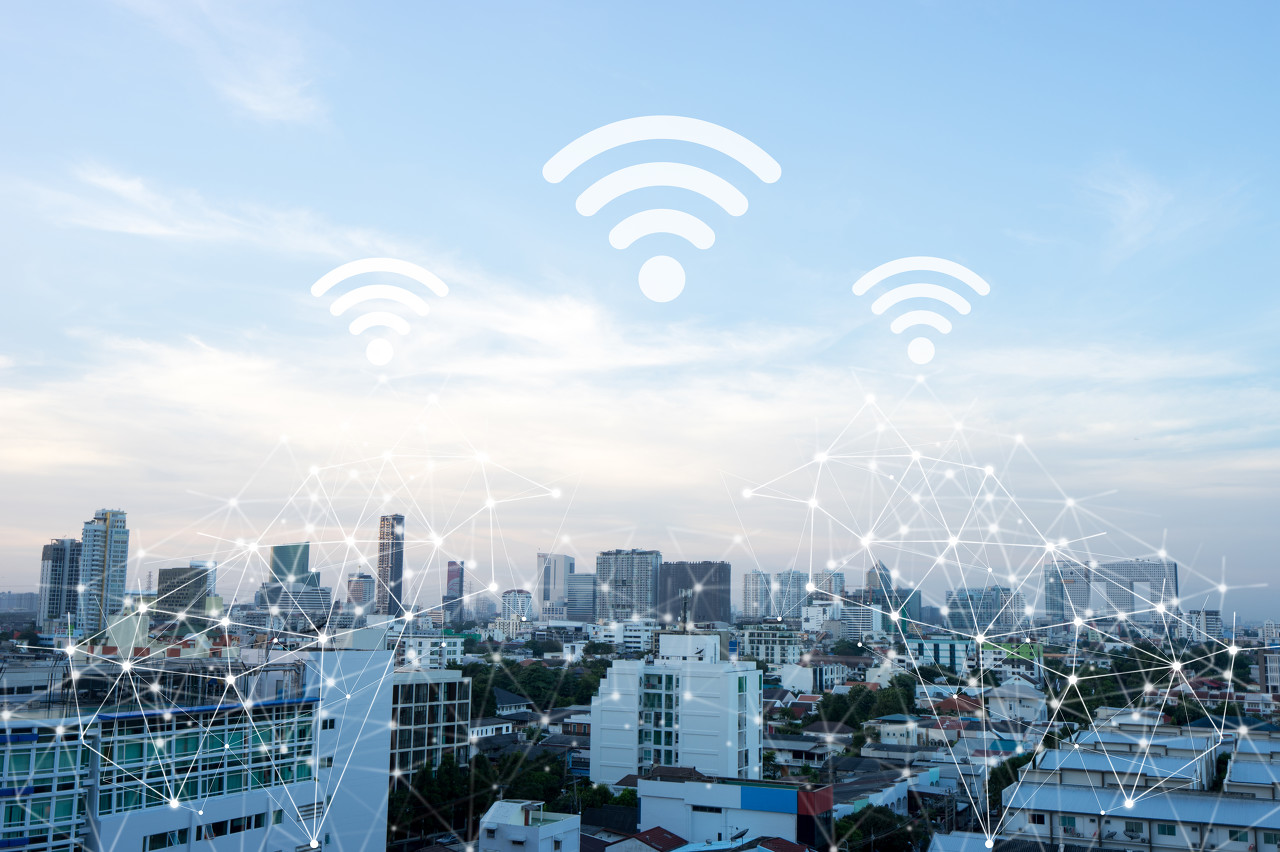What is Wi-Fi 7?

The Wireless Broadband Alliance (WBA) announced in November 2020 that Wi-Fi 6 is ready for a global rollout after five successful trial deployments. In these tests, Wi-Fi 6 delivered nearly triple the gigabit transfer rate of its predecessor, Wi-Fi 5, with capacities up to 9.6Gb/s versus 3.5Gb/s. Wi-Fi 6 was also found to be more reliable, with lower latency and more efficient networks.

This year, Wi-Fi 6 chipsets are expected to reach 1.5 billion, and the technology is also widely adopted by major smartphone brands such as Samsung, Huawei and Apple.
As homes and businesses start to embrace Wi-Fi 6 and Wi-Fi 6E, we decided to take a look at what the wireless industry has in store for the next generation of wireless technology.
Wi-Fi 6 and Wi-Fi 7
Wi-Fi 7, also known as IEEE 802.11be, is the next-generation wireless technology standard; it's a very high-throughput wireless network that uses the 2.4Ghz, 5Ghz, and 6Ghz frequency bands. It is designed to reduce latency, increase the speed of all devices, and support a large number of users.
Wi-Fi 7 will eventually deliver faster speeds to more devices, for longer. It will operate on three frequency bands compared to only two in Wi-Fi 6 and support transfer rates of up to 30Gb/s, which is a huge improvement from Wi-Fi -Fi 6E's current target bit rate of 9.6Gb/s leap.
Proposed features of Wi-Fi 7 include the ability to support 320MHz transmissions, double what Wi-Fi 6 supports. This will improve the speed and throughput of many devices, and users should also find less interference between gadgets, which is important when multiple devices nearby are trying to connect to the same network.
The technology also wants to absorb latency and will ensure that more data requests can be made without delay. One technology it is looking to develop is multi-link operation (MLO), which allows devices to maintain a large number of online connections across different frequency bands at the same time.
Wi-Fi 7 also increases the number of spatial streams from 8 to 16, doubling the theoretical transfer rate. With more data streams, it can also support distributed multiple-input multiple-output (MIMO) technology, which helps provide a high-quality indoor 5G experience.
16 data streams can be transmitted simultaneously by different access points, so multiple access points can coordinate with each other. Currently, there are not many access points to coordinate. However, according to Huawei, this feature is designed to optimize channel selection and adjust the load between access points for efficient use and balanced allocation of wireless resources.
Wi-Fi 7 by itself won't change your broadband speeds, though, so the best-feeling benefits will be put on hold until your Internet Service Provider (ISP) offers a better package. Homes across the country also don't have much demand for the top speeds that Wi-Fi 7 is likely to offer. You'll likely notice a difference with Wi-Fi 7 in the workplace or while traveling, as offices are more likely to need faster speeds for business purposes, like streaming and processing large amounts of data.
What are the key use cases for Wi-Fi 7?
There are many use cases for Wi-Fi 7 and Wi-Fi 7 routers due to their massive increase in speed and lower latency. Streaming will get a huge boost, 8K content will likely gain more traction, as will fast and seamless 4K video conferencing. Online gaming will also see less lag, while greater bandwidth will facilitate advancements in cloud gaming.
Wi-Fi 7 will also benefit from integration with cloud and edge computing networks, industrial Internet of Things (IoT) systems, immersive augmented reality (AR) and virtual reality (VR), and real-time collaboration.
When is the release date for Wi-Fi 7?
The IEEE is expected to publish the 802.11ebe amendment in 2024, and we may see commercial deployments in the meantime. Thereafter, the Wi-Fi Alliance should publish its Wi-Fi 7 certification program to outline security standards and ensure interoperability. Meanwhile, semiconductor company MediaTek claims that Wi-Fi 7 hardware is expected to be available as early as 2023.
Does Wi-Fi 7 mean the end of Wi-Fi 6?
Wi-Fi 6 is still rolling out right now, so it won't be abandoned anytime soon, just as Wi-Fi 5 devices will remain common in the months and years to come. Wi-Fi 7 is still in the early stages of development, and many of the purported innovations still need improvement. Although we don't have a clear description of what we can expect from Wi-Fi 7, we more or less know what the researchers are aiming to develop.
As for Wi-Fi 6, it's likely to be around for a while. To accommodate new technologies, internet speeds need to be fairly fast, and since Wi-Fi 6 is leading the way in development and implementation, it has a distinct advantage.